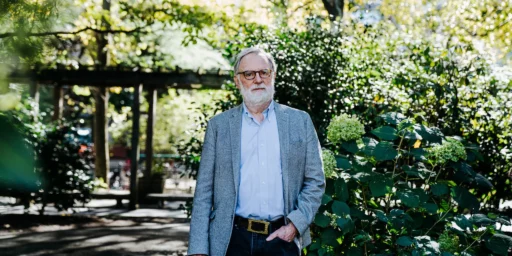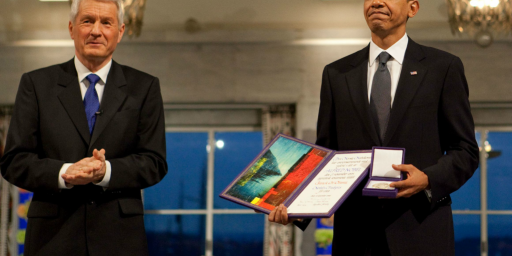Richard Smalley, Nobel Winner, Dies at 62
Dr. Richard Smalley, who won a Nobel Prize for his discovery of “Buckyballs,” which launched the nanotechnology sector, died yesterday after a long bout with leukemia.
Richard E. Smalley, 62, Dies; Chemistry Nobel Winner (NYT)
Richard E. Smalley, the Rice University chemistry professor who shared a Nobel Prize for discovering a new spherical form of carbon and championed the potential of nanotechnology to create a more sustainable economy, died Friday at 62 at the M. D. Anderson Cancer Center in Houston. The cause was leukemia, a spokesman for Rice said.
Dr. Smalley, a short, trim man with a fringe of beard and a wry sense of humor, used his renown as a platform to evangelize for increased investment in educating a new generation of scientists and engineers. He also spoke ceaselessly to conferences and business executives about how nanotechnology with its rapidly expanding capacity to reshape materials at the molecular level could transform the economy and address both environmental and energy challenges. “He’s like a rock star in technology circles,” said Robert Gower, chief executive and co-founder with Dr. Smalley of Carbon Nanotechnologies, a company set up to commercialize Dr. Smalley’s discoveries, in a 2003 interview.
Dr. Smalley’s scientific breakthrough, which was shared with Harold W. Kroto of the University of Sussex in England and Robert F. Curl Jr., a colleague at Rice, stemmed from Dr. Kroto’s efforts to understand the composition of carbon-rich stars. Dr. Kroto arrived at Dr. Smalley’s laboratory at Rice in 1985 to set up experiments vaporizing graphite with lasers.
As the scientists analyzed the results, they encountered a large number of exceptionally stable carbon molecules with 60 atoms. They puzzled over the shape until Dr. Smalley, building models in his kitchen out of paper, figured out that the atoms must be arranged as a soccer ball-like mix of 12 pentagons and 20 hexagons. Because the shape reminded him of the geodesic dome invented by Buckminster Fuller, he called the molecule a “buckminsterfullerene.”
Nobel Laureate Richard Smalley, 62, Dies (AP)
Nobel Laureate Richard Smalley, a Rice University professor who helped discover buckyballs, the soccer ball-shaped form of carbon, and championed the field of nanotechnology, has died at the age of 62. Smalley, who had battled cancer, died Friday at M.D. Anderson Cancer Center, Rice University said.
“We will miss Rick’s brilliance, commitment, energy, enthusiasm and humanity,” Rice President David Leebron said.
He shared the 1996 Nobel Prize in chemistry with fellow Rice chemist Robert Curl and British chemist Sir Harold Kroto for the discovery of the new form of carbon, which they dubbed buckminsterfullerene — buckyballs for short — because of its resemblance to the geodesic domes designed by Buckminster Fuller. “In my view, this was a singular event in the history of nanotechnology,” said Neal Lane, a senior fellow at Rice University’s Baker Institute for Public Policy. “It not only created a whole new field of ‘fullerene chemistry,’ it immediately made feasible the notion of making things from the bottom up, just as physicist Richard Feynman had predicted 50 years earlier.” Nanotechnology, for things measured in billionths of a meter, involves manipulating materials on an atomic or molecular scale to build microscopic devices.
Nobel winner who discovered ‘buckyballs’ dead at 62 (Reuters)
Rice University professor Richard Smalley, who shared a 1996 Nobel Prize in chemistry for the discovery of “buckyballs,” has died of cancer at the age of 62, the university said on Friday.
Buckyballs, short for buckminsterfullerenes, were a form of carbon that had 60 atoms arranged in a hollow sphere and whose discovery in 1985 opened the way for the development of the field of nanotechnology.
[…]
After winning the Nobel, Smalley became a strong advocate for the development of nanotechnology as a means of solving global problems, particularly in the field of energy. “We are about to be able to build things that work on the smallest possible length scales, atom by atom, with the ultimate level of finesse,” Smalley told the U.S. House of Representatives in 1999 during testimony in support of the National Nanotechnology Initiative. “These little nanothings, and the technology that assembles and manipulates them — nanotechnology — will revolutionize our industries and our lives,” he said.
A tragic loss.





